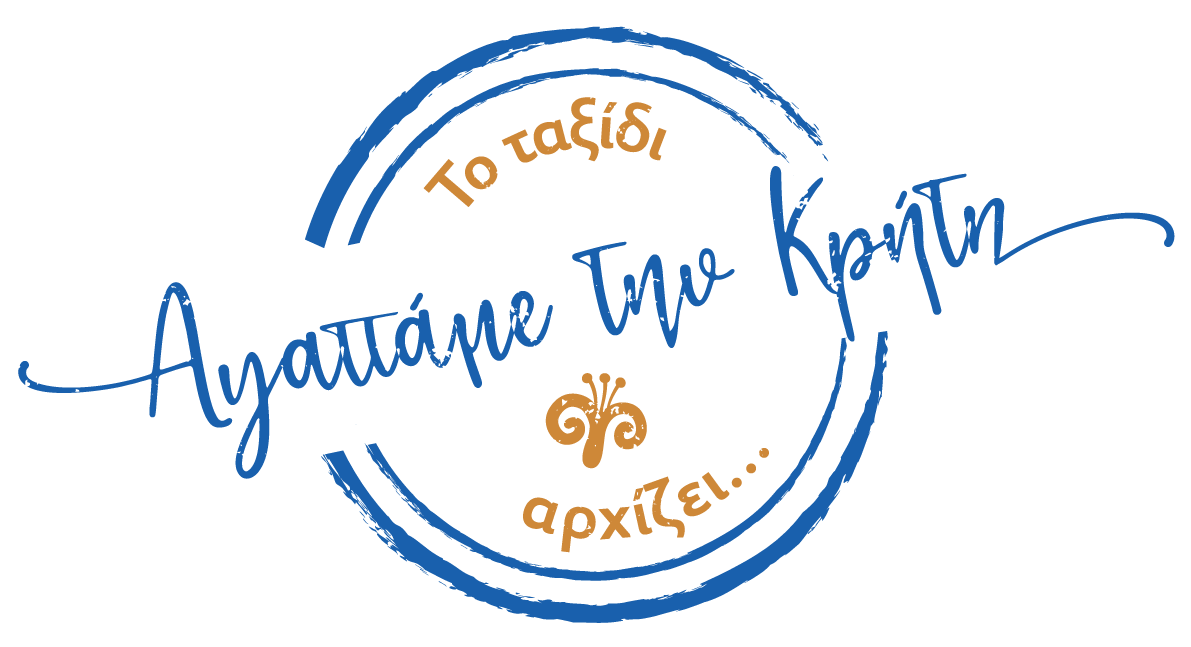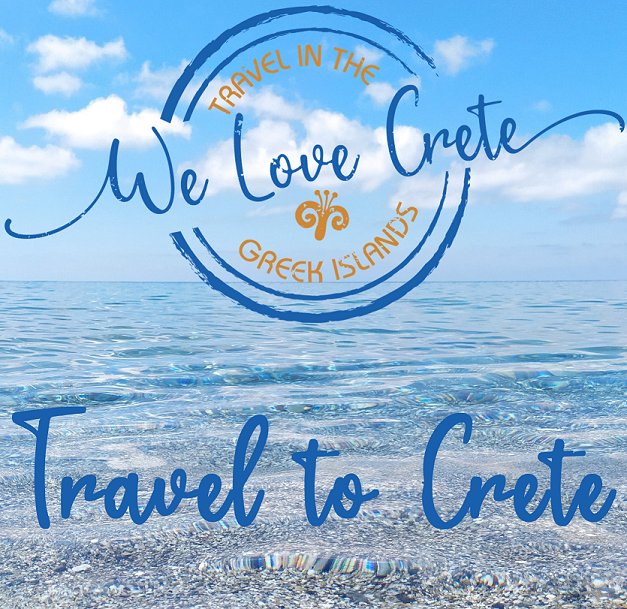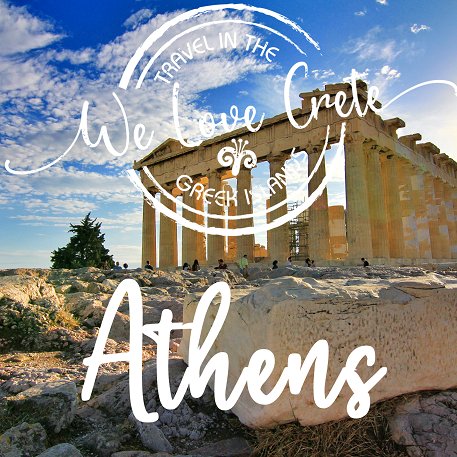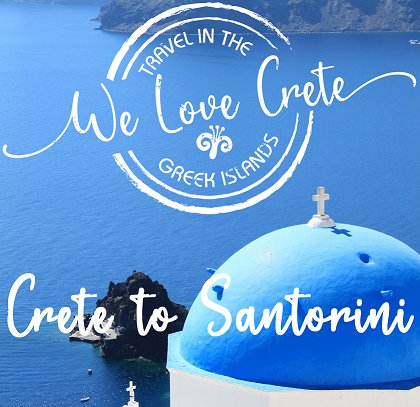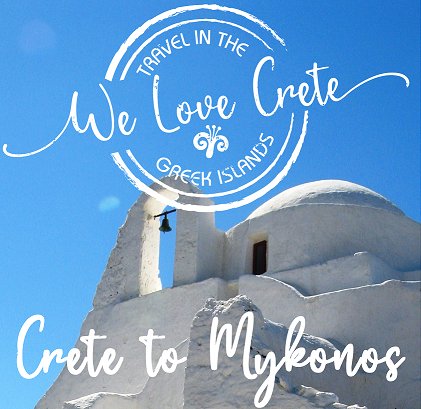This page may contain affiliate links, see our disclaimer here.
How to Visit Ancient Sites in Crete
By Katia Luz

How to Visit Ancient Sites in Crete - our top tips for the most important ancient sites on Crete island.

Experiencing the Ancient Minoan Culture & Palaces of Crete is a highlight for many visitors to the island, and a matter of pride for Cretans returning from the diaspora.
The four palaces show us the Minoan civilization which has been recorded as the first in Europe. Certainly it was an interesting artistic culture. The frescoes in Knossos give us an impression of the people as sophisticated and nature-loving.
See the locations of the ancient sites on the map below.
Minoan Ancient Sites

Our Top Tips for the 4 Minoan sites on Crete -
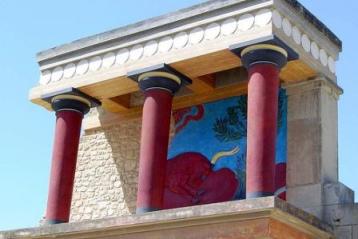
Knossos Palace
5 km from Heraklion in central Crete
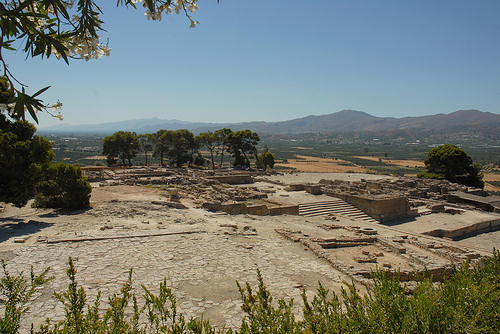
Phaistos Palace
62 km from Heraklion in central Crete

Malia Palace
40 km from Heraklion in central Crete
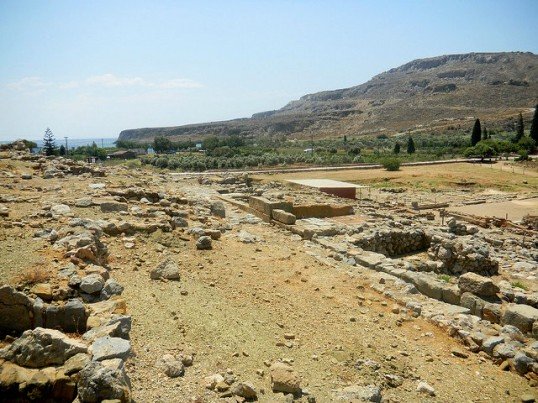
Zakros Palace
50 km from Sitia in eastern Crete
Opening Times - our best tips is to always check the official sites for the opening times which can be varied according to days of the week or local holidays. Always check with your host or hotel on the morning of your visit. Don't allow the closure of the site to ruin your trip.
Entry Fees -
these are set by the government and are very low - all of these sites entry fees are under
€20.00. Check the official pages for any updates.
Information - see the links to the official government pages for each site.
The ancient Minoan culture and palaces of Crete are covered in good guide books and there is extensive information available at the museum of Heraklion and at each site entrance. The historical sites are well managed and thoroughly enjoyable to visit.
How to Visit Ancient Sites in Crete
Knossós Palace
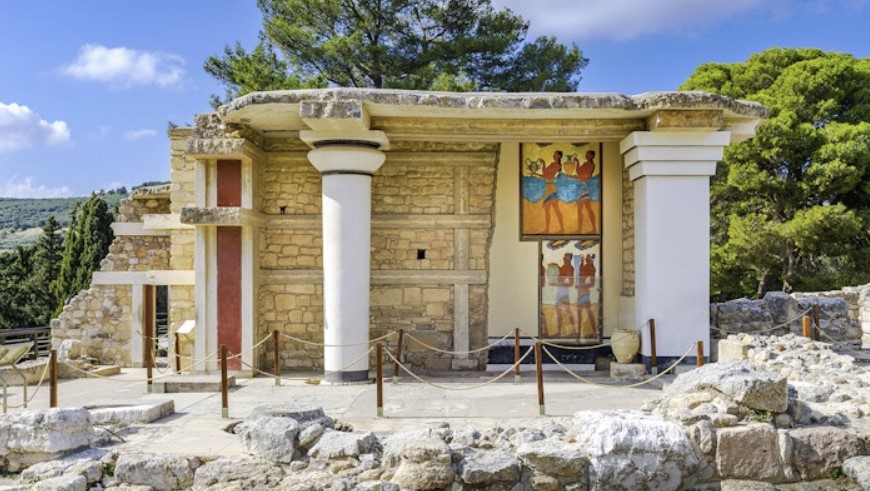
How to Visit Ancient Sites in Crete
Knossós
is one of the most intriguing ancient Minoan culture and palaces of Crete. This is a
very popular destination and in summer is extremely busy. If you don't
want crowds, visit in spring or autumn or, at the very least, start as
early as possible in the morning. This was the legendary home to King
Minos, and we see the motif of the bull, bull horns and bull frescoes,
throughout the Palace.
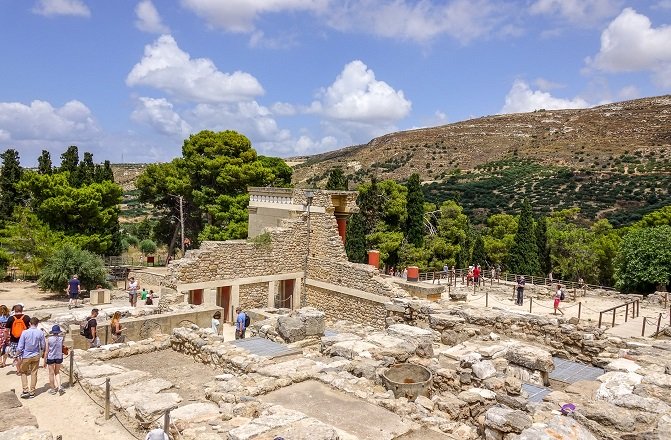
Sir Arthur Evans purchased the land where the site lay from the departing Turks at the beginning of the 20th century. He had discovered Knossos almost by chance, whilst seeking seal stones, he then proceeded to excavate and recreate the palace as he saw it. This is almost unheard of in archaeology, especially in modern times. The result is quite astonishing. Some like it, some don't. You really have to see it to appreciate the enormity of the undertaking, let alone the aesthetics of the restoration of Minoan civilization.
It is not often recorded that a local Cretan man, Minos Kalokairinos, discovered the site in 1878. The subsequent diggings and discoveries were undertaken later by Evans.
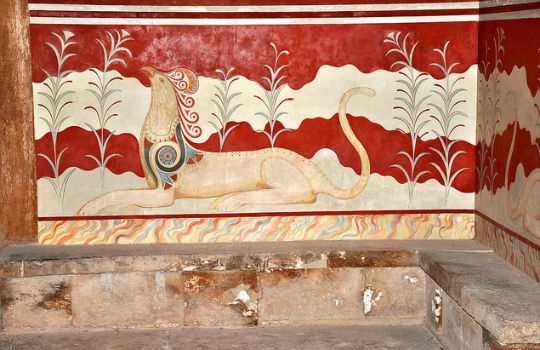 The Throne Room of Knossos with Griffin Fresco
The Throne Room of Knossos with Griffin FrescoThe palace dates from 2000 BC, highlights include the frescoes, the throne room and the inner sanctum.
For us, simply the location is magic. We can understand why a Goddess worshipping culture would choose to place a palace here; it is a naturally nurturing environment.
We would strongly suggest visiting in the morning to get ahead of the crowds, and if you are serious about your history, visit in the quieter seasons of spring or autumn, to avoid crowds. Knossos can easily be visited by bus or by car and several options for guided tours are available. It is a large site so make time to visit, especially if you have a family. Take water and snacks. Suncreen and a hat. As mentioned - it can get really, really busy!
See more tips for visiting Knossos below.
- 5 km from Heraklion by car (free onsite parking) on Knossos Avenue
- 20 minutes from Heraklion by bus
- Depart from Heraklion Central Bus Station at 9 Ikarou Avenue, Heraklion
- Get a ticket for 'Zone B - Knossos' - timetables at astiko-irakleiou.gr
- Take the blue Heraklion City Bus marked Knossos Κνωσσός
Malia Palace

How to Visit Ancient Sites in Crete
Malia Palace is close to the sea, dating from 1900 BC. This palace was built at the same time as Knossos and Phaistos. Tablets with Linear A script were found here, also famous is the Room of the Panther, where a stone axe shaped like a panther, dating from 1700 BC, was discovered.
Many artifacts have been gathered from this site and displayed at the Archaeological Museum of Heraklion, such as large ceramic pitharia or storage jars. This museum displays most of the artifacts and frescoes of the ancient Minoan palaces of Crete.
As the site is very close to Heraklion and the national road, it is easy to visit by bus or by car. Organised tours are also available.
- 40 km east of Heraklion by car
- 45 minutes by bus from Heraklion Central Station
- Depart from Heraklion Central Bus Station at 9 Ikarou Avenue, Heraklion
- Take KTEL Bus for Heraklion/Lasithi area - timetables here
- Take the green buses marked for 'Archaia Malion' which means 'Ancient Malia'
Phaistos Palace

How to Visit Ancient Sites in Crete
The Palace of Phaistos, located in the naturally fertile Messara valley, was built on a slight rise giving an impressive strategic setting and domination over the whole area. Behind the palace and up from the plains of the Messara rise the foothills of Psiloritis mountain range.
Phaistos Palace was built around 2000 BC, there is no doubt it was the same civilisation as the palace at Knossos. Excavations of this site revealed the now famous Phaistos Disk (also spelt Festos). This ceramic disk has an unknown script, ancient, but distinct from Linear A and B scripts so far identified by archaeologists. Debate and research still continues about the disk.
This site it tricky to reach by bus and the journey is quite long. Consider a taxi or an organised tour.
- 62 km south of Heraklion by car
- 1.5 hours from Heraklion Central Station by bus
- Depart from Heraklion Central Bus Station at 9 Ikarou Avenue, Heraklion
- Take the green KTEL bus for Heraklion/Lasithi region - timetables here
- Get the bus to Moires then change buses for Phaistos
- Note the various spellings of Moires, Mires or Μοίρες and Phaistos, Festos, Faistos or Φαιστός
Zákros Palace

How to Visit Ancient Sites in Crete
The last of the major palaces to be discovered, Zákros Palace is located near the sea at the very eastern tip of Crete, close to the fishing village of Kato Zakros.
In a beautiful location, it is well worth a visit to this more remote
part of Crete to see the excavations in relative quiet compared to the
crazy crowds at Knossos. Extraordinary artifacts such as the beautiful rock crystal vase and stone bull's head were discovered at this palace.
This is the most remote of all the sites.
- 170 km east by car from Heraklion
- 4 hours by bus from Heraklion
- Depart from Heraklion Central Bus Station at 9 Ikarou Avenue, Heraklion
- Take the green KTEL bus for Heraklion/Lasithi region - timetables here
- Take the bus to Agios Nikolaos then Sitia, then another bus to Kato Zakros
- Make note of the spellings of Sitia, Siteia or
Σητεία
and Kato Zakros
Κάτω Ζάκρος
On the Map
See below the locations of the Minoan culture and palaces on the map of Crete.
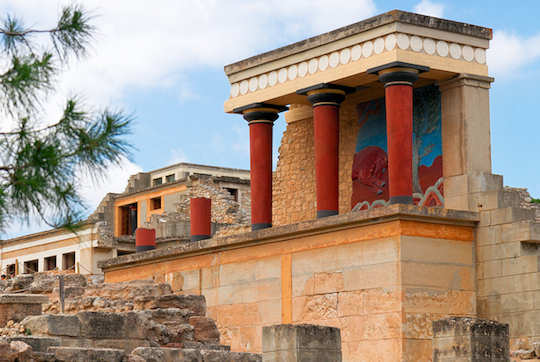 Knossos propylaeon or entrance gate with fresco
Knossos propylaeon or entrance gate with frescoExperiences
Allow a knowledgeable history guide to show you the Minoan culture and its intricacies with these experiences all over Crete. The stories from those passionate about the layered history of this island will fascinate.

See the extensive collection of Minoan cultural artifacts in the Heraklion Archaeological Museum. This 90 minute guided tour allows history of Minoan culture to unfold.
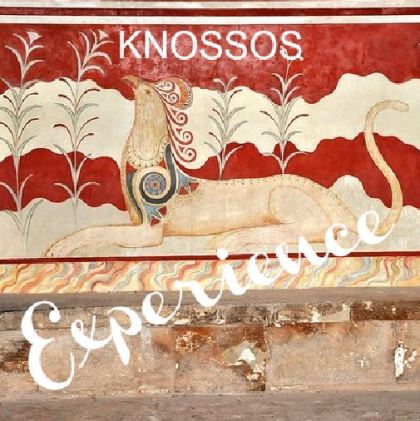
Half-Day Knossos Palace Tour - 5.5 hour tour includes Koules Fortress and Agios Titos church in Heraklion as well as a guided tour of the archaeological site. See the controversial reconstructions completed by the archaeologist Sir Arthur Evans, and hear the stories of the labyrinth from your experienced history guide.
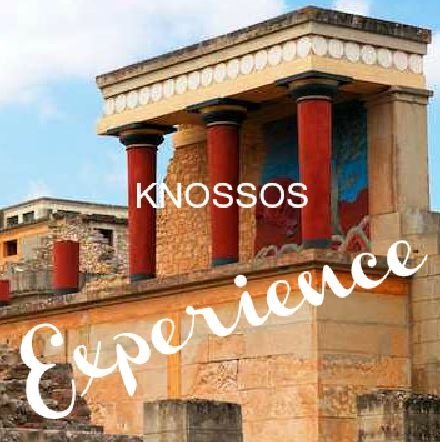
Take a Knossos Palace Tour - there are a variety of guided experiences available, from a Skip The Line entry ticket with a guide for 90 minutes, to a 12 hour day tour which includes Knossos and Lasithi Plateau.
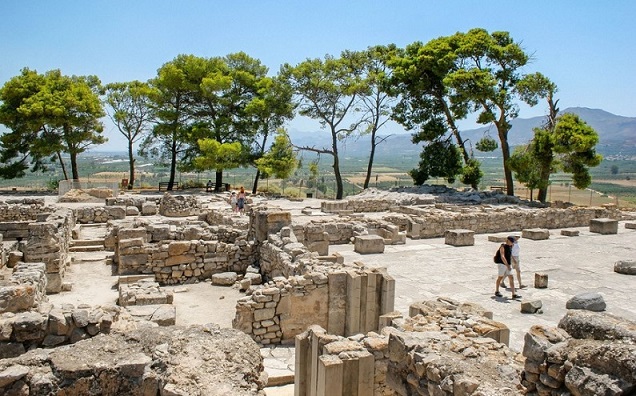

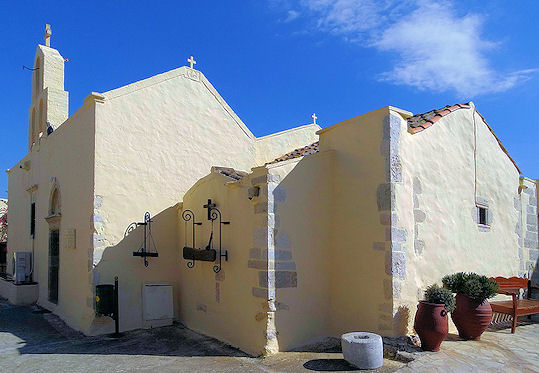
Find a local tour here that includes Phaistos and Matala Beach
Explore the highlights of southern Crete on a guided full-day trip from Heraklion. Enjoy a small-group tour of some of the region's most popular sights. Meet your guide at your hotel and hop on the bus that will take you to your first stop, Phaistos. Along the way, take in scenic views of the Messara wine growing region's mountains and vineyards.
At Phaistos, explore the ruins of a medieval city and the second-largest palace in Crete. Learn more about the history of the complex from your guide and enjoy panoramic views of the Ida Mountains and the Lassithi Massif.
Afterward, swim in the crystal-clear waters of the Libyan Sea in the former fishing village of Matala and take a walk to the world-famous cliff side caves. Then, tuck into a delicious lunch with views over the bay. On the way back to Heraklion, stop at the Monastery of Odigitria. Here, witness 2 tholos tombs and let yourself be enchanted by the monastery's charm before heading back to your hotel. 8 hours
4.4 / 5 | 5 Reviews
Getting Here
When you book with our car rental partners - Rental Centre Crete - you are supporting a local company with excellent service and an easy online booking procedure. We are sure you will be well looked after by Harry and his team.

We trust you have enjoyed these tips from the We Love Crete team. Evíva!
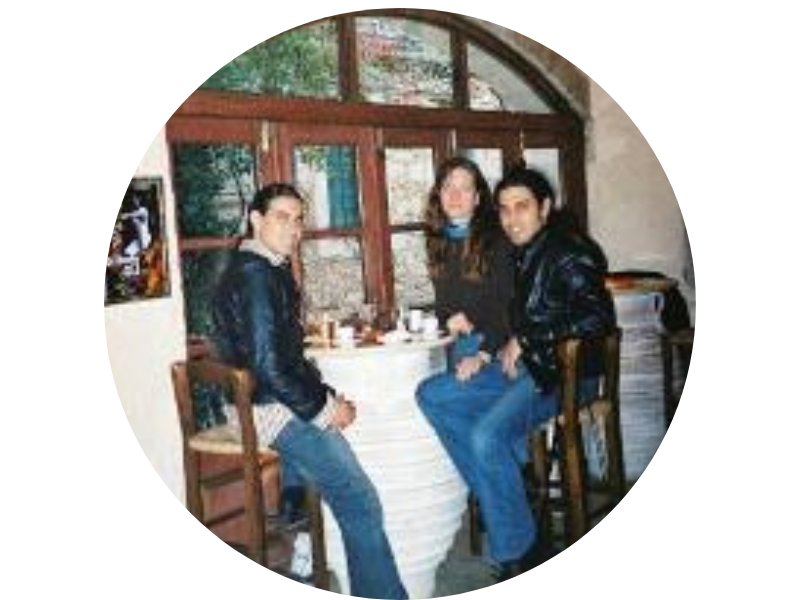
Yiásas!
Anastasi, Apostoli & Katia
are the We Love Crete team
We just love sharing our passion for Crete, Greece and travel
About us Contact Us Kaló taxídi!
- Home
- Crete History
- How to Visit Ancient Sites in Crete
About the Team
Yiásas!
Anastasi, Apostoli & Katia
are the
We Love Crete team
We just love sharing our passion for Crete, Greece and travel
About us

